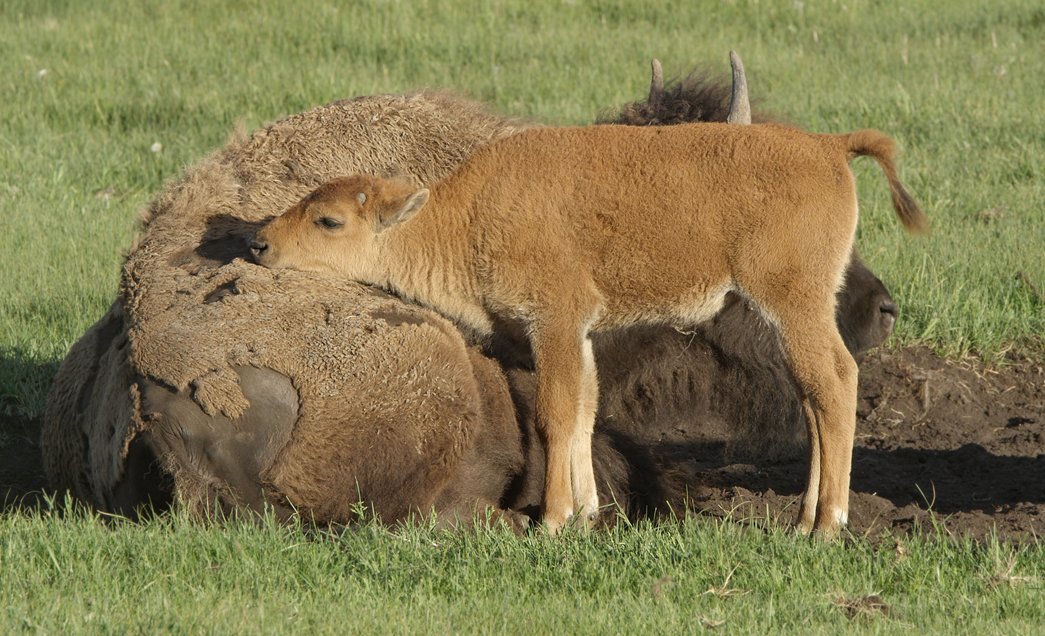

Most of the time when we see bison in the park we pretty much ignore them, or if they are in the road causing a jam we get mad at the people stopping to take a picture. But we shouldn’t do either one. Bison are one of the true symbols of what the prairies of North America used to be like. Between the intentional bison slaughter by white men, and plowing up more than 95% of the prairies to plant corn and wheat, the bison population plummeted to close to zero. The Yellowstone bison herd started with 20 mountain bison. There numbers have increased but they are still persecuted when they leave the park in the winter.
There are more to bison than meet the eye. They have fairly complex behaviors and there is a bird that evolved with them that is both fascinating and a nuisance, the brown-headed cowbird. The brown-headed cowbird is exquisitely adapted for living with bison. They follow bison and pick up insects they stir up when they browse. When the bison decide to move the cowbirds can fly with them but they often hitch a ride on the bison, sometimes using the travel time to groom and rest.

Because bison are constantly on the move brown-headed cowbirds can’t stop to build a nest and raise babies, but they have found a way around that. They lay their eggs in other bird’s nests. This type of behavior is called “brood parasitism.” It is fairly common in Africa but uncommon here. It is also newer here than in the old world. How do we know that? Because brood parasites, mostly cuckoos, in Africa lay their eggs in only one species of bird’s nests and their eggs mimic the host eggs. Brown-headed cowbirds lay their eggs in around 220 different species of bird’s nests and they don’t mimic the host bird’s eggs. The cowbirds usually lay their eggs earlier than the host bird and their eggs hatch faster. Brown-headed cowbird babies often kick out the host bird’s eggs and young, so a small warbler ends out feeding a cowbird baby twice its own size. Works well for cowbirds, but not so well for the host species.

Because humans have increased the number of grazing animals (cows) in North America brown-headed cowbirds have flourished and birds like Kirkland’s warbler and black-capped vireos are on the endangered species list as a result. That is one of the reasons some people consider them a nuisance species, but when I see them with bison I can almost imagine what this continent was like hundreds of years ago before the European invasion, Manifest Destiny, and all that came with it.








Thank you for such an interesting story, Judy. All of the photos are great, especially the one of the warbler feeding her large baby.
Oh my, you are an amazing source of interesting information. And, that photo is priceless. All of them are but those birds – that poor warbler does not know what to think.